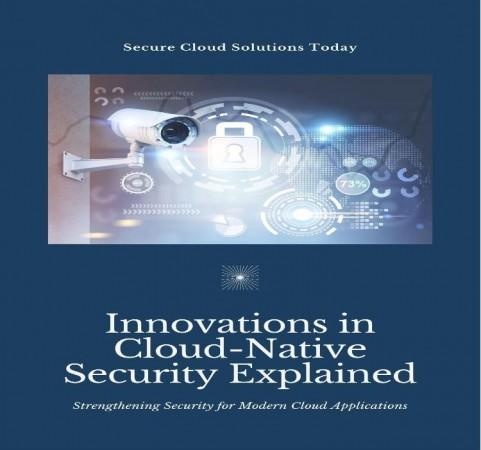
The rapid evolution of cloud-native technologies has transformed application development and security, introducing new challenges that traditional approaches struggle to address. Ravindra Karanam, a renowned expert in the field, offers valuable insights into innovative strategies for securing cloud-native environments, providing a comprehensive approach to protecting modern, dynamic cloud infrastructures.
The Shift from Traditional Security Models
Cloud-native applications, characterized by microservices, containers, and serverless architectures, present unique challenges to traditional security models. In the past, security relied on well-defined network perimeters, a model known as "castle-and-moat." This approach, however, falls short in the dynamic and ephemeral nature of cloud-native environments where the boundaries are fluid, workloads are transient, and internal-external resource lines blur.
Dynamic Workload Lifecycle and Its Security Implications
Cloud-native environments feature dynamic workloads, where containers and serverless functions are quickly created, scaled, and terminated based on demand. This rapid pace presents security challenges, such as ensuring continuous deployment without vulnerabilities, avoiding resource over-provisioning that expands attack surfaces, and managing state across short-lived workloads. Security measures must adapt in real-time to these changes, as static policies are no longer sufficient.
Addressing the Ephemeral Nature of Containers
The short-lived nature of containers and serverless functions creates challenges for security monitoring and incident response. Traditional security tools, built for long-running systems, often struggle to detect threats within these brief lifespans. This transient nature complicates forensic analysis, as evidence of an attack can vanish with the container. A security strategy centered on runtime protection and proactive monitoring is crucial for real-time threat detection and response.
Microservices and the Expanded Attack Surface
Microservices architecture enhances scalability and agility by allowing independent development and deployment of services, but it also introduces greater complexity and expands the attack surface. Each microservice becomes a potential target for cyberattacks, making secure communication between services critical. To mitigate these risks, consistent security policies and robust authentication mechanisms must be applied across all microservices to safeguard the entire system.
Best Practices for Cloud-Native Security
To address these multifaceted security challenges, a holistic approach to cloud-native security is essential. Key practices include:
Runtime Protection
Runtime protection involves continuous monitoring and enforcement of security policies during application execution. Detecting anomalies in container behavior and isolating compromised resources enables real-time defense against evolving threats.
Container Image Scanning
Proactive container image scanning helps identify vulnerabilities before deployment. Integrating automated scanning into CI/CD pipelines ensures early detection of issues, reducing the attack surface.
Zero Trust Networking
The Zero Trust model, based on "never trust, always verify," is vital in cloud-native environments. Using service mesh technologies encrypts traffic and enforces access controls, ensuring secure communication.
Least Privilege Principle
Implementing least privilege minimizes the impact of breaches by ensuring components only have necessary permissions, reducing the blast radius of potential security incidents.
Embracing Continuous Learning and Adaptability
In the fast-evolving cloud-native landscape, continuous learning and adaptability are crucial. Security strategies must remain dynamic, incorporating threat intelligence to anticipate attacks and leveraging automation for rapid incident response. Staying informed about cloud provider updates and integrating security throughout the application lifecycle is essential. This proactive approach helps organizations maintain a strong security posture in the constantly changing cloud environment.
In conclusion, Ravindra Karanam underscores the need for a comprehensive and adaptive security approach to safeguard cloud-native applications. By embracing best practices such as runtime protection, container image scanning, zero-trust networking, and the least privilege principle, organizations can more effectively address evolving threats. As cloud-native technologies advance, "Continuous learning and adaptability are essential for a successful cloud-native security strategy." Embracing these principles allows organizations to fully leverage cloud-native technologies while maintaining robust security.








